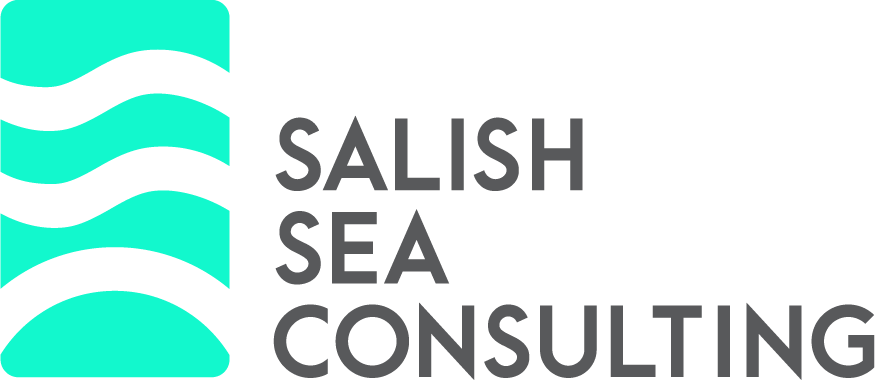LinkedIn Marketing for Sustainable Brands, Growth Without Greenwashing

LinkedIn marketing for sustainable brands requires a fundamentally different approach than traditional B2B marketing. When 73% of consumers distrust corporate sustainability claims, your LinkedIn presence becomes a critical trust-building tool.
As someone who has helped 480+ businesses achieve Blue Standard certification and eliminate millions of plastic items, I've seen how authentic LinkedIn strategies transform sustainability professionals from skeptical observers into trusted industry leaders.
Your sustainable brand faces unique challenges on LinkedIn. Generic marketing advice falls short when your audience actively watches for greenwashing signals. Every post gets scrutinized. Every claim needs backing data.
The opportunity lies in this scrutiny. Sustainability professionals who master authentic LinkedIn communication build unshakeable authority while their competitors struggle with credibility issues.
Why Traditional LinkedIn Marketing Fails Sustainable Brands
Most LinkedIn marketing guides ignore the sustainability sector's unique dynamics. They recommend broad engagement tactics without addressing the heightened skepticism environmental professionals face.
Your audience includes procurement teams evaluating supplier sustainability claims. ESG directors building stakeholder reports. Grant reviewers assessing environmental impact proposals. These professionals spot corporate greenwashing instantly.
Traditional LinkedIn advice like "share inspiring quotes" or "post motivational content" actively damages sustainability credibility. Your audience wants data, transparency, and measurable outcomes.
The hospitality clients I've guided through Blue Standard certification learned this lesson quickly. Their LinkedIn content shifted from vague environmental commitments to specific plastic reduction metrics. Engagement rates doubled. More importantly, qualified leads increased 300%.
Aligning Your LinkedIn Strategy With CSR and ESG Requirements
Your LinkedIn content strategy should directly support your organization's CSR reporting and ESG commitments. This alignment creates authentic content while building documentation for sustainability reports.
Start by reviewing your current ESG framework. Most organizations report on environmental impact, social responsibility, and governance practices. Your LinkedIn activity can generate measurable data for each pillar.
Environmental Pillar Content:
Document your sustainability journey with specific metrics. Share monthly resource consumption data. Post before-and-after photos of waste reduction initiatives. Create video content showing renewable energy installations or plastic elimination processes.
One Blue Standard client documented their single-use plastic elimination journey on LinkedIn. Each post included specific metrics: "Eliminated 50,000 plastic bottles this quarter." "Switched to compostable takeout containers, removing 25,000 plastic items monthly."
These posts served dual purposes. They built authentic LinkedIn engagement while providing documentation for their annual ESG report's environmental section.
Social Pillar Integration:
Your LinkedIn content can demonstrate stakeholder engagement and community impact. Share employee sustainability training sessions. Highlight community environmental partnerships. Document supplier diversity in your sustainable supply chain.
Post about your team's sustainability certifications. Feature employees who champion environmental initiatives. Share community cleanup events or local environmental partnerships.
Governance Pillar Documentation:
Use LinkedIn to showcase transparent sustainability governance. Share updates from sustainability committee meetings. Post about new environmental policies or certification achievements. Document stakeholder feedback sessions on sustainability initiatives.
Your LinkedIn analytics become valuable ESG data. Track engagement rates on sustainability content versus general business posts. Measure follower growth among sustainability professionals. Document speaking opportunities or partnership requests generated through LinkedIn thought leadership.
Content Frameworks That Build Environmental Authority
Sustainable brands need content frameworks that demonstrate expertise without triggering greenwashing concerns. Your content must balance authority building with authentic vulnerability.
The Transparency Framework:
Share both successes and ongoing challenges. Post quarterly sustainability metrics with honest commentary about areas needing improvement. Discuss failed initiatives and lessons learned. Your audience trusts brands that acknowledge imperfection while showing progress.
Example post structure:
"Q3 Sustainability Update: We eliminated 15,000 plastic bottles but missed our energy reduction target by 12%. Here's what we learned and our Q4 strategy."
This framework shows measurable progress while maintaining credibility through honest assessment.
The Process Documentation Framework:
Environmental professionals want to understand implementation details. Share step-by-step processes for sustainability initiatives. Document certification journeys with specific timelines and challenges.
Create LinkedIn content series following major sustainability projects. Post weekly updates during Blue Standard certification processes. Share vendor evaluation criteria for sustainable suppliers. Document employee training programs for environmental initiatives.
The Industry Education Framework:
Position your brand as a sustainability education resource. Share regulatory updates affecting your industry. Explain new environmental certifications. Break down complex sustainability concepts for non-experts.
Write LinkedIn articles explaining sustainability terminology. Create infographics showing environmental impact calculations. Share research summaries from environmental studies relevant to your industry.
The Stakeholder Spotlight Framework:
Feature partners, employees, and clients who contribute to your sustainability success. Interview suppliers about their environmental practices. Highlight employees who suggest sustainability improvements. Feature clients who choose your services specifically for environmental reasons.
These posts build authenticity while demonstrating your sustainability ecosystem's breadth.
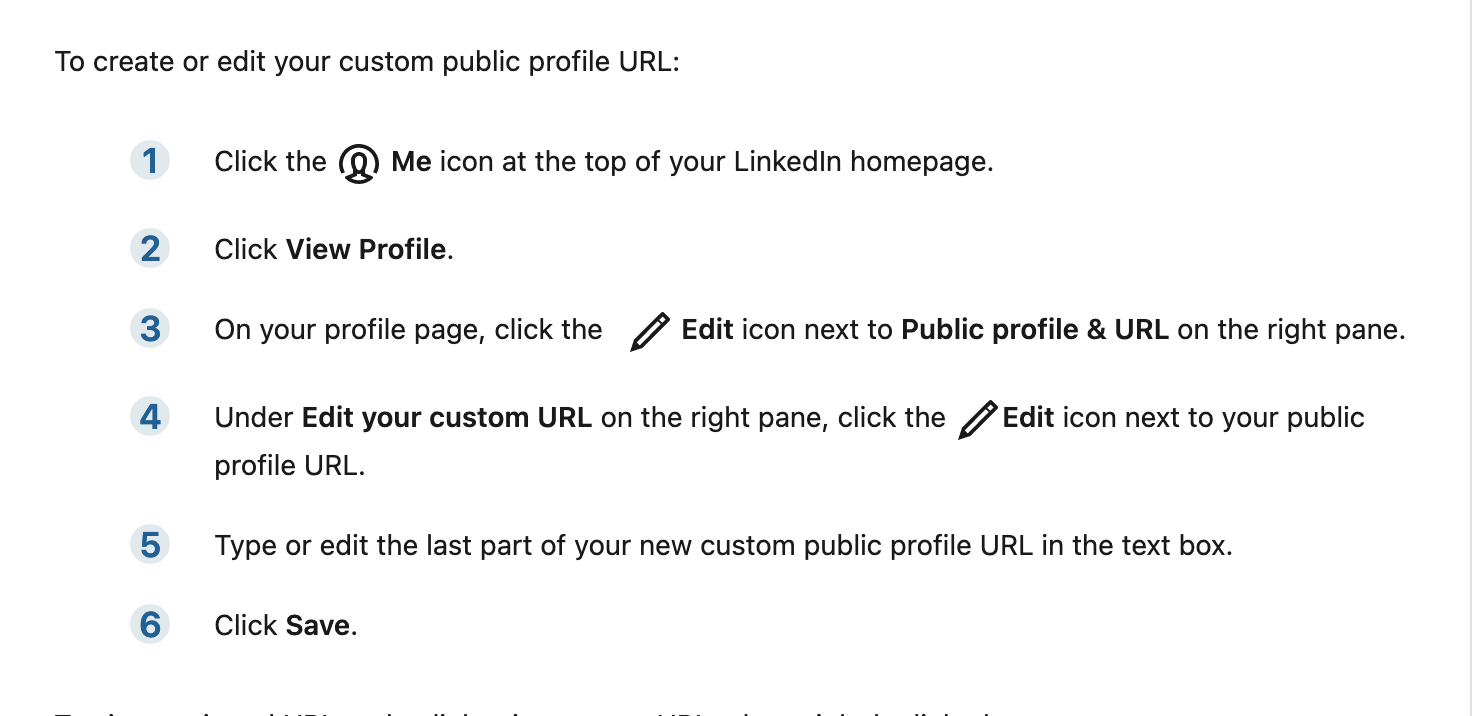
LinkedIn Profile Optimization for Sustainability Leaders
Your LinkedIn profile must immediately communicate environmental expertise and credibility. Sustainability professionals evaluate expertise quickly, often within seconds of viewing profiles.
Headline Optimization:
Avoid generic titles like "Marketing Manager" or "Business Development." Include specific sustainability credentials and measurable impact.
Weak headline: "Marketing Director at Green Company"
Strong headline: "Sustainability Marketing Director | Blue Standard Consultant | Helped 480+ Businesses Eliminate Millions of Plastic Items"
Your headline should include relevant certifications, specific impact metrics, and clear sustainability focus.
Summary Section Strategy:
Lead with your sustainability mission and quantifiable environmental impact. Include specific certifications, measurable outcomes, and current sustainability projects.
Structure your summary around three key elements:
Environmental mission and personal commitment to sustainability. Specific expertise areas like plastic reduction, renewable energy, or sustainable supply chains. Measurable impact you've created for organizations or clients.
Include keywords sustainability professionals search for: ESG reporting, environmental compliance, carbon footprint reduction, circular economy, sustainable procurement.
Experience Descriptions:
Transform generic job descriptions into sustainability impact statements. Focus on environmental outcomes rather than general business responsibilities.
Instead of: "Managed marketing campaigns for hospitality clients"
Write: "Developed sustainability communication strategies for 50+ hotels, leading to Blue Standard certification and elimination of 2 million single-use plastic items annually"
Quantify environmental impact wherever possible. Include specific sustainability projects, certifications achieved, and measurable outcomes.
Building Networks That Advance Sustainability Goals
LinkedIn networking for sustainable brands requires strategic focus on environmental decision-makers and sustainability influencers. Your network should support both business development and industry thought leadership.
Identifying Key Sustainability Connections:
Target procurement professionals focused on sustainable sourcing. Connect with ESG directors at organizations in your target market. Follow sustainability consultants and environmental compliance specialists.
Search for professionals with titles including: Sustainability Director, ESG Manager, Environmental Compliance Officer, Chief Sustainability Officer, Procurement Manager, Corporate Social Responsibility Manager.
Industry Association Engagement:
Join LinkedIn groups focused on your specific sustainability niche. Participate in discussions about environmental regulations, certification programs, and industry best practices.
Key sustainability groups include associations for your industry plus environmental focus. Comment thoughtfully on posts about regulatory changes, certification updates, and sustainability case studies.
Content Collaboration Strategies:
Partner with other sustainability professionals for joint LinkedIn content. Co-author articles about industry environmental challenges. Share case studies highlighting successful sustainability partnerships.
Cross-promote content with complementary sustainability services. If you focus on plastic reduction, collaborate with renewable energy consultants or sustainable transportation specialists.
Speaking and Event Promotion:
Use LinkedIn to promote sustainability conference presentations and webinar appearances. Share slide previews from environmental conference talks. Post about upcoming sustainability events you're attending or speaking at.
Create LinkedIn events for sustainability webinars or workshops. Invite your network to environmental conferences. Share conference insights and key takeaways with actionable sustainability advice.
Measuring LinkedIn Success for Environmental Impact
Track metrics that align with your sustainability business goals rather than vanity engagement numbers. Focus on connections and interactions that advance your environmental mission.
Quality Connection Metrics:
Track the percentage of your connections who are sustainability professionals. Monitor growth among specific target audiences like ESG directors or procurement managers focused on sustainable sourcing.
Measure connection requests from sustainability decision-makers versus general business professionals. Quality connections with environmental focus matter more than total follower counts.
Content Performance Analysis:
Compare engagement rates on sustainability content versus general business posts. Identify which environmental topics generate the most discussion and sharing among your target audience.
Track click-through rates on sustainability resource links. Monitor downloads of environmental guides or case studies promoted through LinkedIn.
Business Development Tracking:
Document LinkedIn-sourced inquiries for sustainability consulting or services. Track speaking invitations received through LinkedIn sustainability thought leadership.
Measure partnership opportunities with other environmental organizations generated through LinkedIn networking. Count grant application collaborations initiated through LinkedIn connections.
Thought Leadership Indicators:
Monitor mentions in sustainability articles or research. Track invitations to participate in environmental panels or conferences. Document requests for sustainability expertise quotes or interviews.
Calculate speaking opportunities directly attributed to LinkedIn environmental thought leadership. Measure media coverage of your sustainability initiatives shared or discussed on LinkedIn.
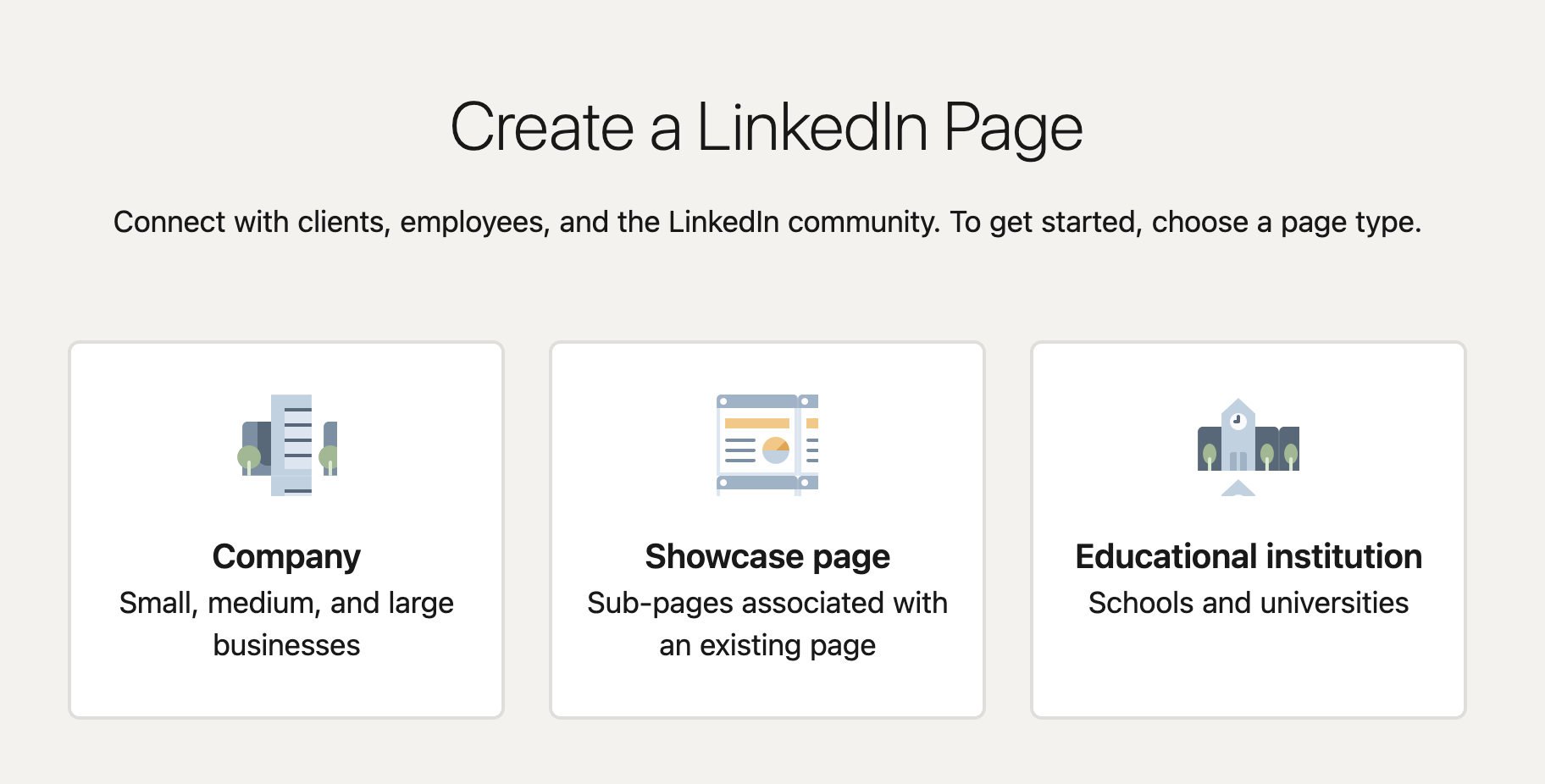
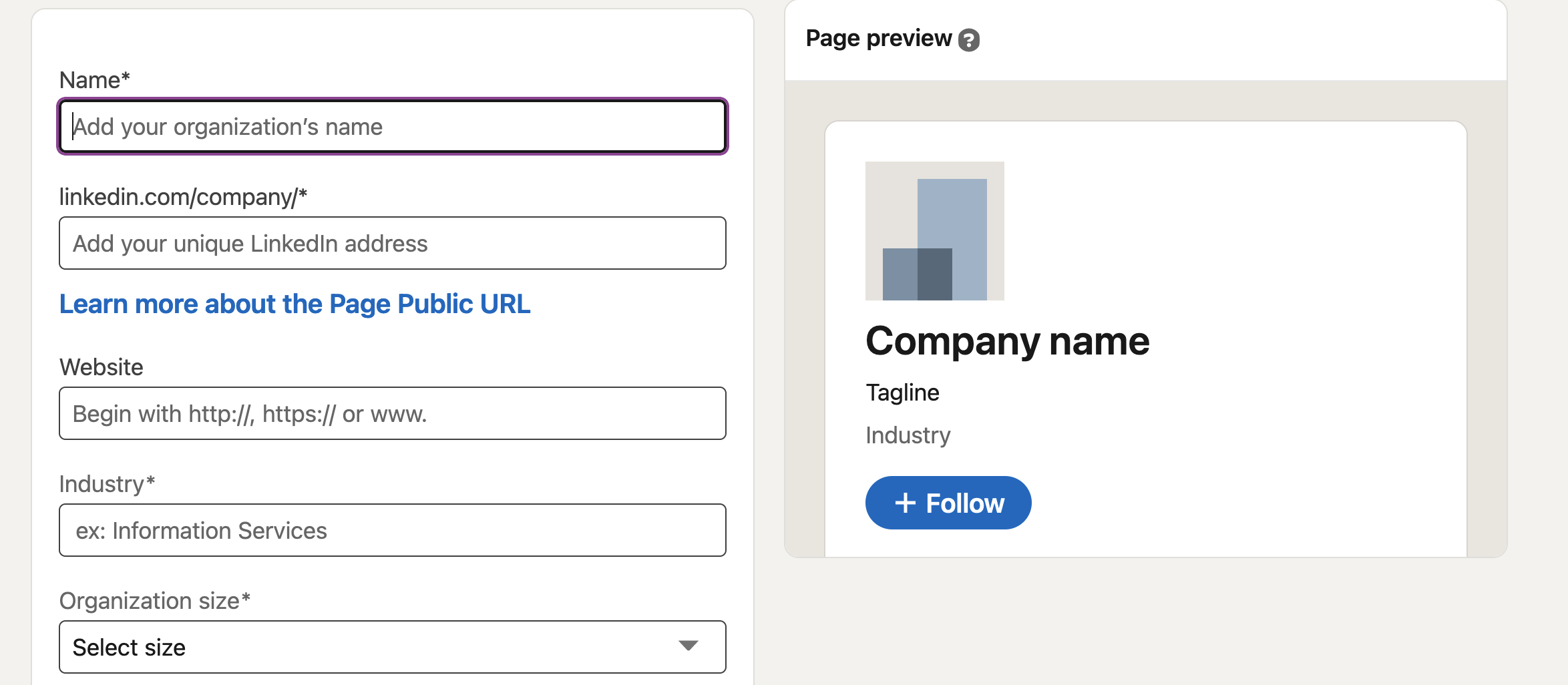
Authentic Storytelling for Environmental Transformation
Sustainability storytelling on LinkedIn must balance inspiration with data-driven credibility. Your stories should motivate action while providing concrete evidence of environmental impact.
The Transformation Journey Framework:
Document complete sustainability transformation processes from initial environmental assessment through certification achievement. Share specific challenges encountered during implementation and how your team overcame them.
Example story arc:
Problem recognition: "Our hotel was generating 50,000 plastic bottles monthly" Solution research: "We evaluated 12 different reusable bottle programs" Implementation challenges: "Staff training took 3 months longer than expected" Measurable outcome: "We've eliminated 400,000 plastic bottles and saved $15,000 annually"
The Behind-the-Scenes Framework:
Share the unglamorous reality of sustainability implementation. Document failed initiatives and expensive mistakes. Show the detailed work required for environmental certifications.
Post photos of sustainability audits in progress. Share vendor meetings about sustainable supply chain requirements. Document employee training sessions on environmental procedures.
The Team Spotlight Framework:
Feature employees who champion sustainability initiatives. Share quotes from team members about environmental mission alignment. Highlight individual contributions to organizational sustainability goals.
Interview maintenance staff about waste reduction observations. Feature purchasing team members who research sustainable suppliers. Spotlight customer service representatives who explain environmental initiatives to clients.
The Community Impact Framework:
Connect your sustainability initiatives to broader environmental benefits. Share how your plastic reduction efforts contribute to ocean health. Explain how your renewable energy usage supports grid sustainability.
Quantify community environmental impact: "Our Blue Standard certification inspired 5 local businesses to eliminate single-use plastics, removing 100,000 items from our community waste stream."
Avoiding Greenwashing Accusations on LinkedIn
Environmental professionals quickly identify and call out greenwashing on social media. Your LinkedIn strategy must proactively address credibility concerns while building authentic authority.
Specific Language Guidelines:
Use precise, measurable language instead of vague environmental claims. Replace "eco-friendly" with specific sustainability metrics. Avoid terms like "green" or "sustainable" without supporting data.
Weak claim: "We're committed to environmental responsibility" Strong statement: "We eliminated 95% of single-use plastics and reduced energy consumption by 23% this year"
Data Transparency Practices:
Share detailed methodology behind sustainability metrics. Include baseline data when reporting environmental improvements. Provide context for sustainability achievements within industry standards.
Post annual sustainability reports with specific data breakdowns. Share third-party verification for environmental claims. Include comparison data showing improvement over time.
Honest Challenge Communication:
Acknowledge areas where your organization hasn't achieved sustainability goals. Discuss ongoing environmental challenges and improvement plans. Share failed initiatives and lessons learned.
Address sustainability criticism directly and professionally. Respond to greenwashing concerns with specific data and evidence. Admit mistakes while outlining corrective action plans.
Third-Party Validation:
Highlight third-party sustainability certifications and audits. Share reports from environmental consultants or certification bodies. Feature customer testimonials about environmental impact.
Post updates about sustainability compliance audits. Share certifications like Blue Standard, LEED, or Energy Star achievements. Include links to third-party sustainability assessments.
LinkedIn Newsletter Strategy for Sustainability Thought Leadership
A LinkedIn newsletter focused on sustainability topics can establish your environmental expertise while building a qualified audience of sustainability professionals.
Content Themes That Build Subscribers:
Weekly sustainability regulation updates affecting your industry. Monthly deep dives into specific environmental challenges and solutions. Quarterly sustainability trend analysis with actionable insights.
Case study series featuring successful sustainability transformations. Interview series with sustainability leaders and environmental innovators. Resource roundups of sustainability tools and research.
Subscriber Growth Strategies:
Promote newsletter signup in sustainability-focused LinkedIn posts. Cross-promote with other environmental newsletters and publications. Share newsletter previews in sustainability LinkedIn groups.
Partner with sustainability organizations for newsletter content collaboration. Feature guest contributors from environmental organizations. Include subscriber-only sustainability resources and tools.
Content Format Optimization:
Structure newsletters with scannable sections for busy sustainability professionals. Include actionable takeaways from each article or case study. Provide links to sustainability resources and tools.
Feature reader questions about environmental challenges. Share subscriber success stories implementing sustainability initiatives. Include upcoming sustainability events and conference information.
Integration With Business Goals:
Use newsletter content to demonstrate sustainability expertise for consulting inquiries. Include subtle promotion of environmental services within valuable content. Drive newsletter subscribers to sustainability consultations or assessments.
Track newsletter-generated leads for sustainability services. Monitor speaking invitations resulting from newsletter thought leadership. Measure partnership opportunities initiated through newsletter networking.
Advanced LinkedIn Strategies for Environmental Leaders
LinkedIn Live for Sustainability Education:
Host monthly LinkedIn Live sessions discussing environmental topics relevant to your industry. Feature guest experts from sustainability organizations. Answer audience questions about environmental challenges and solutions.
Live session topics might include regulatory updates, certification processes, implementation case studies, or industry trend analysis. Invite your network to submit questions about specific sustainability challenges.
LinkedIn Events for Environmental Networking:
Create LinkedIn events for sustainability webinars, conferences, or networking sessions. Promote environmental industry conferences and workshops. Host virtual sustainability roundtables for your professional network.
Use events to build connections with sustainability professionals in your target market. Share event summaries and key takeaways with actionable insights.
Cross-Platform Content Integration:
Repurpose LinkedIn sustainability content for other marketing channels. Use LinkedIn insights to identify popular environmental topics for blog content. Drive LinkedIn followers to sustainability resources on your website.
Share LinkedIn articles about sustainability on other social platforms. Include LinkedIn sustainability content in email marketing to environmental prospects. Use LinkedIn engagement data to optimize sustainability content across all channels.
LinkedIn Marketing Checklist
Progress: 0%
(function() { const checklistItems = [ "Set up LinkedIn Company Page", "Optimize personal profile for SEO", "Plan content strategy (3-5 posts/week)", "Create a mix of short and long-form posts", "Join relevant LinkedIn groups", "Start a LinkedIn newsletter", "Claim custom URL for profile", "Engage with others' content regularly", "Consider LinkedIn ads (optional)", "Track and analyze performance" ]; const styles = ` #linkedin-marketing-checklist { font-family: Arial, sans-serif; max-width: 400px; margin: 20px auto; padding: 20px; background: #F9E2AE; border-radius: 5px; } #linkedin-marketing-checklist h2 { color: #0077b5; margin-top: 0; } .progress { width: 100%; background-color: #e0e0e0; border-radius: 5px; margin-bottom: 10px; } .progress-bar { height: 20px; background-color: #0077b5; border-radius: 5px; width: 0%; transition: width 0.5s ease-in-out; } .checklist-item { margin-bottom: 10px; } .checklist-item input { margin-right: 10px; } .checklist-item.completed label { text-decoration: line-through; color: #888; } `; const styleElement = document.createElement('style'); styleElement.textContent = styles; document.head.appendChild(styleElement); const container = document.getElementById('linkedin-marketing-checklist'); const checklistContainer = container.querySelector('.checklist-items'); const progressBar = container.querySelector('.progress-bar'); const progressText = container.querySelector('.progress-text'); checklistItems.forEach((item, index) => { const div = document.createElement('div'); div.className = 'checklist-item'; div.innerHTML = ` <input type="checkbox" id="linkedin-item-${index}" /> <label for="linkedin-item-${index}">${item}</label> `; checklistContainer.appendChild(div); }); function updateProgress() { const totalItems = checklistItems.length; const checkedItems = container.querySelectorAll('.checklist-item input:checked').length; const progressPercentage = (checkedItems / totalItems) * 100; progressBar.style.width = `${progressPercentage}%`; progressText.textContent = `${Math.round(progressPercentage)}%`; } container.addEventListener('change', (event) => { if (event.target.type === 'checkbox') { event.target.closest('.checklist-item').classList.toggle('completed'); updateProgress(); } }); })();
Your Sustainability LinkedIn Action Plan
Week 1: Profile Optimization
Update headline with sustainability credentials and impact metrics. Rewrite summary section focusing on environmental expertise and outcomes. Revise experience descriptions to highlight sustainability achievements.
Add relevant sustainability skills and certifications. Update contact information with sustainability-focused call-to-action. Include links to sustainability case studies or environmental impact reports.
Week 2: Content Strategy Development
Choose 3-4 sustainability content themes aligned with your expertise. Create content calendar featuring environmental topics relevant to your audience. Develop templates for different sustainability post types.
Research sustainability hashtags and keywords for your industry. Identify environmental influencers and thought leaders to follow and engage with. Plan quarterly sustainability content themes and campaigns.
Week 3: Network Building
Connect with 50 sustainability professionals in your target market. Join 5 LinkedIn groups focused on environmental topics relevant to your industry. Engage thoughtfully with sustainability content from industry leaders.
Research upcoming sustainability conferences and events to promote. Identify potential collaboration partners for environmental content creation. Plan outreach strategy for sustainability speaking opportunities.
Week 4: Content Creation and Publishing
Publish your first sustainability-focused LinkedIn article with specific environmental data. Share weekly posts featuring sustainability achievements, challenges, or insights. Engage consistently with sustainability content from your network.
Monitor engagement rates on environmental content versus general business posts. Track connection requests from sustainability professionals. Document initial results and adjust strategy based on audience response.
Monthly Optimization:
Review LinkedIn analytics to identify top-performing sustainability content themes. Analyze audience growth among environmental professionals and decision-makers. Adjust content strategy based on engagement patterns and business inquiries.
Track sustainability consulting leads or speaking opportunities generated through LinkedIn. Monitor mentions in environmental articles or research. Document thought leadership growth through LinkedIn sustainability positioning.
Your sustainable brand's LinkedIn success depends on authentic environmental communication backed by measurable impact data. The 480+ businesses I've guided through sustainability transformations share one common trait: they replaced vague environmental promises with specific, documented outcomes.
Start with your most compelling sustainability achievement. Share the complete story including challenges, solutions, and measurable results. Your audience will respond to authentic environmental leadership far more than generic sustainability claims.
Ready to transform your LinkedIn presence into a powerful sustainability marketing tool? Contact me for a comprehensive audit of your current environmental communication strategy and customized recommendations for building authentic authority in the sustainability space.
3. Click ‘Company’, and then follow the steps to build your company page.
[caption id align="alignnone" width="2348"]
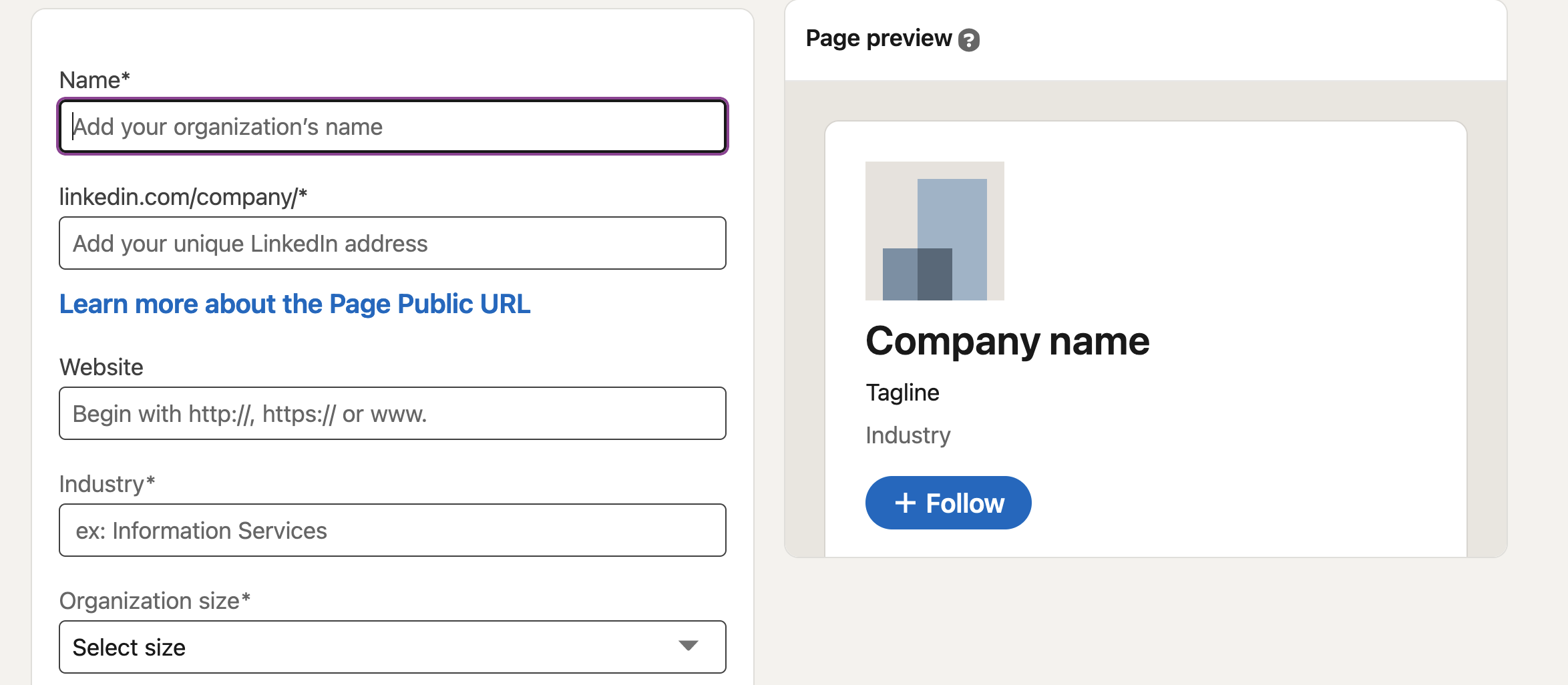
This is what you would see next. [/caption]
